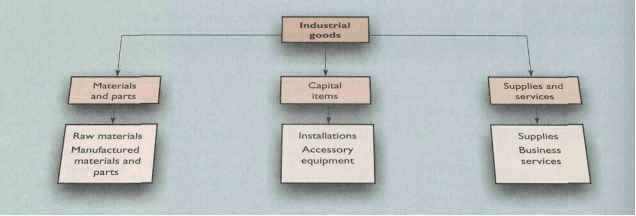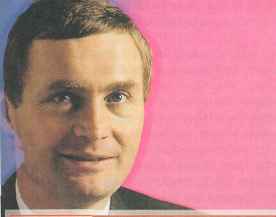Consumer Products
Consumer products are tho.se bought by final consumers for personal consumption. Marketers usually classify these goods based on consumer shopping habits. Consumer products include convenience products, shopping produces, speciality products and unsought products. These products differ in the way consumers buy them, so they differ in how they are marketed (see Table 13,1).2
Convenience products are consumer goods and services that the consumer usually buys frequently, immediately and with a minimum of comparison and buying effort. They are usually low priced and widely available. Examples are soap, sweets and newspapers. Convenience goods ean be divided further into miples, impulse goods and emergency goods.
Staples are goods that consumers buy on a regular basis, such as milk, toothpaste or bread. Impulse goods are purchased with little planning or search effort. These goods are normally available in many places because consumers seldom seek them out. Thus chocolate bars and magazines are placed next to checkout counters because shoppers may not otherwise think of buying them. Emergency consumer product A product bought by final consumers for personal consumption.
Convenience product A consumer product that the customer usually buys frcq uently, immediately, and with a minimum of comparison and buying effort.

- Figure 13.2
Classification of industrial goods shopping product A consumer produce that The customer, in the process of selection and purchase, aha racteristica lly compares -with others on such bases as suitability, quality, price and style.
speciality product A consumer product «!t(/i unique characteristics or brand identification for 'which a significant group of buyers is 'willing to make a special purchase effort.
unsought product A consumer product that the consumer either does not know about or knows about but does not normally think of buying.
products are purchased when a need is urgent - umbrellas during a rainstorm, or boots and shovels during the year's first snowstorm. Manufacturers of emergency goods will place them in many outlets to make them readily available when the customer needs them.
Shopping products are less frequently purchased and consumers .spend considerable time and effort gathering information and comparing alternative brands carefully on suitability, quality, price and style. Examples of shopping products are furniture, clothing, used cars and major household appliances. Shopping products can be divided into homogeneous and heterogeneous goods. The buyer sees homogeneous shopping products, such as major appliances (e.g., cookers, fridges), as similar in quality but different enough in price to justify shopping comparisons. The seller has to 'talk price' to the buyer. However, when a consumer is shopping for heterogeneous products such as clothing and furniture, product features are often more important than price. If the buyer wants a new suit, the cut, fit and look are likely to be more important than small price differences. Therefore a seller of heterogeneous shopping products must carry a wide assortment to satisfy individual tastes and have well-trained salespeople to give information and advice to customers.
Speciality products arc consumer goods with unique characteristics or brand identification for which a significant group of buyers is willing to make a special purchase effort. Examples are specific brands and types of car, high-priced home entertainment systems, photographic equipment and luxury goods. A jukebox, for example, is a speciality good because buyers are usually willing to travel greal distances to buy one. Buyers normally do not compare speciality goods. They invest only the time needed to reach dealers carrying the wanted products. Although these dealers do not need convenient locations, they must still let buyers know where to find them.
Unsought products are consumer goods that the consumer either does not know about or knows about but does not normally think of buying. Most major innovations are unsought until the consumer becomes aware of them through advertising. Other examples of known but unsought goods are life insurance, home security systems and blood donations to the Red Cross. By their very nature, unsought goods require a lot of advertising, personal selling and other marketing efforts. Some of the most advanced personal selling methods have developed out of the challenge of selling such goods.

When you develop a premium soft drink, you should use only the best ingredients. In Perfectly Clear, NutraSweet is the best sweetener.
trri Ludlow. Managing Oirecicr. Silver Spring Soft; Drinks
When you develop a premium soft drink, you should use only the best ingredients. In Perfectly Clear, NutraSweet is the best sweetener.
trri Ludlow. Managing Oirecicr. Silver Spring Soft; Drinks

Raw materials: this ad positions NutraSweet's sweetener as the. important ingredient in the success of other brands, the sweetener that crea tes added va lue for its customers.
Continue reading here: Product Attributes
Was this article helpful?
Readers' Questions
-
hagos6 months ago
- Reply
-
selam6 months ago
- Reply
-
kim1 year ago
- Reply
-
Suoma1 year ago
- Reply
-
Gruffo1 year ago
- Reply
-
sonya1 year ago
- Reply
-
sebhat nuguse1 year ago
- Reply
-
henri1 year ago
- Reply
-
Nick Sackville-Baggins1 year ago
- Reply
-
edith1 year ago
- Reply
-
Andwise1 year ago
- Reply